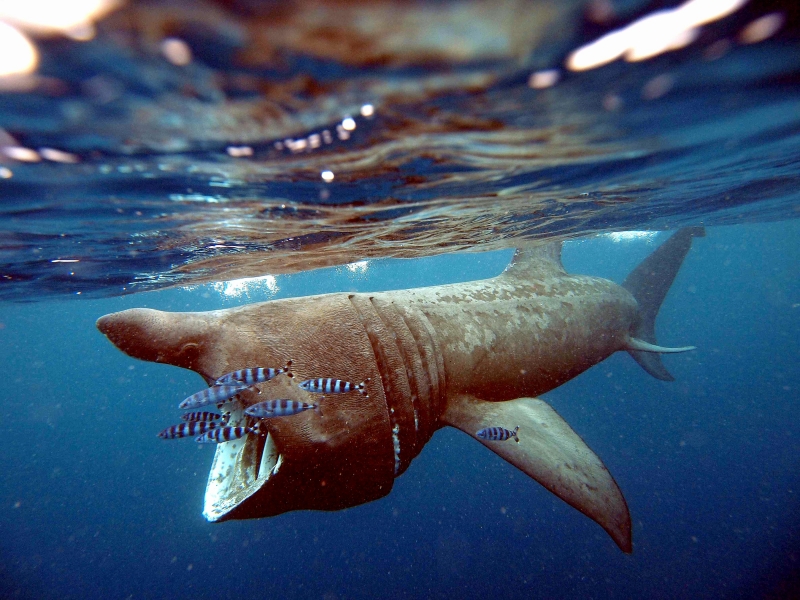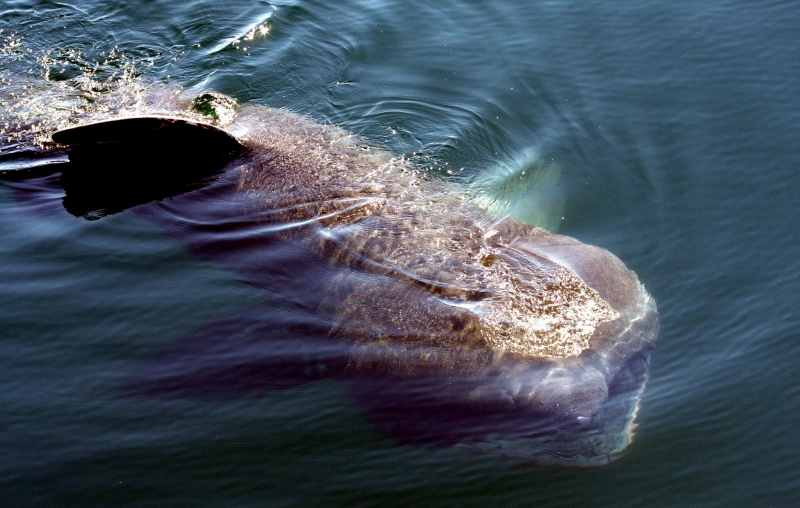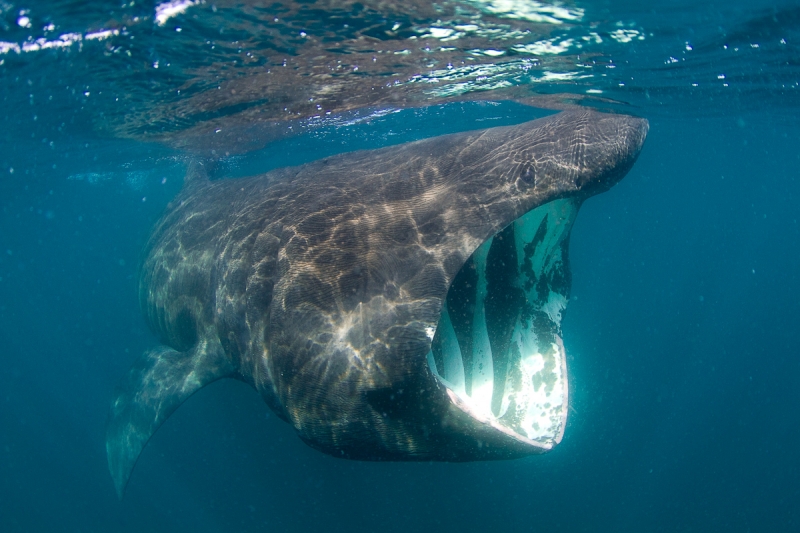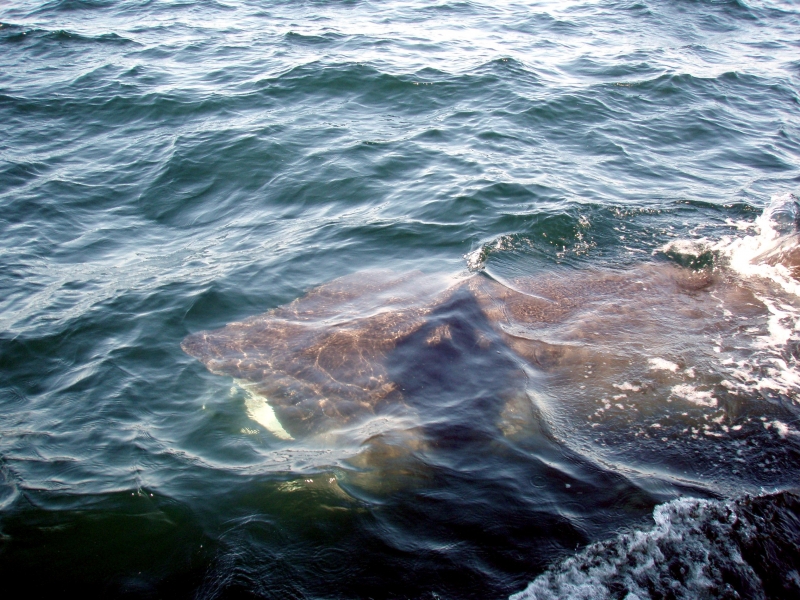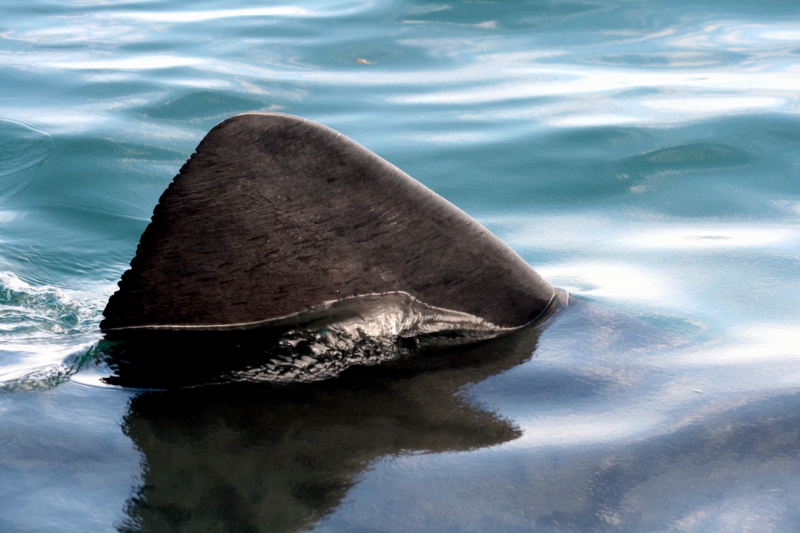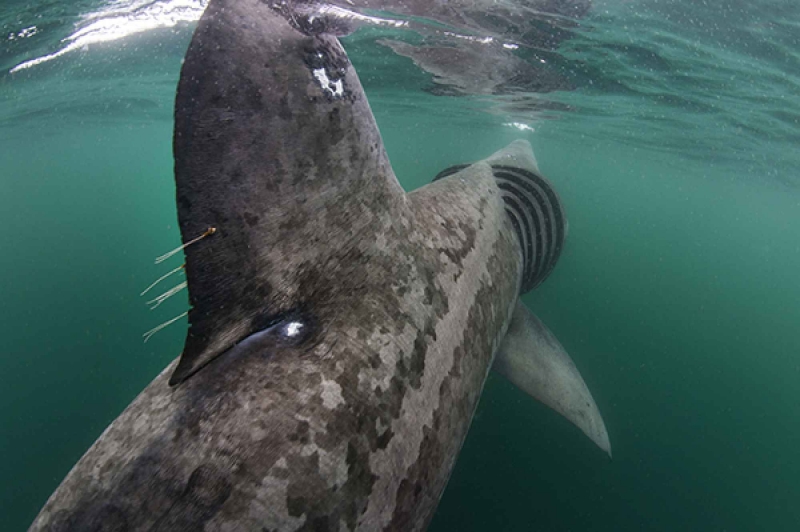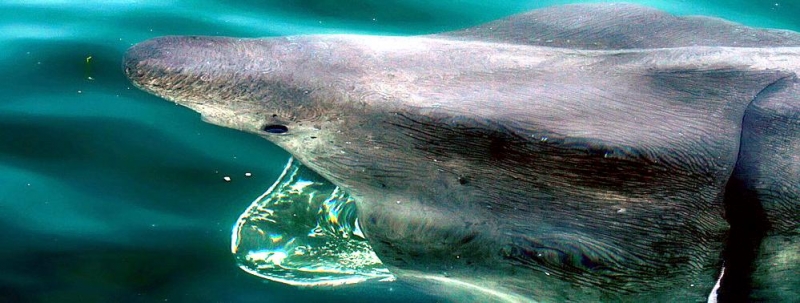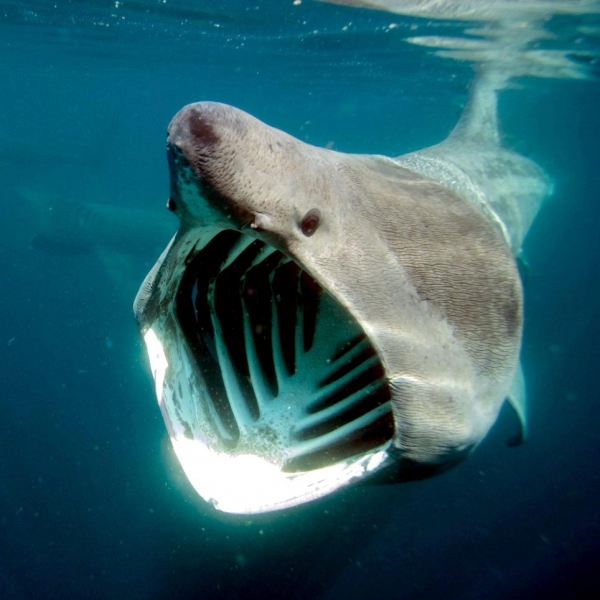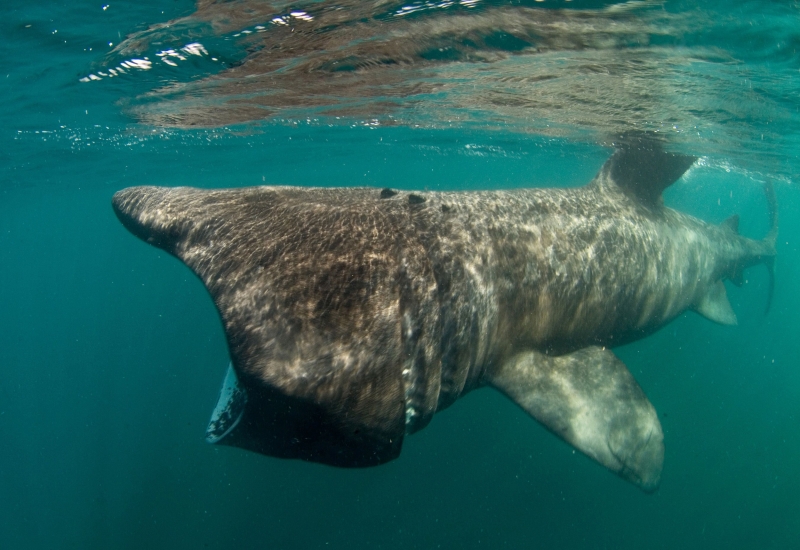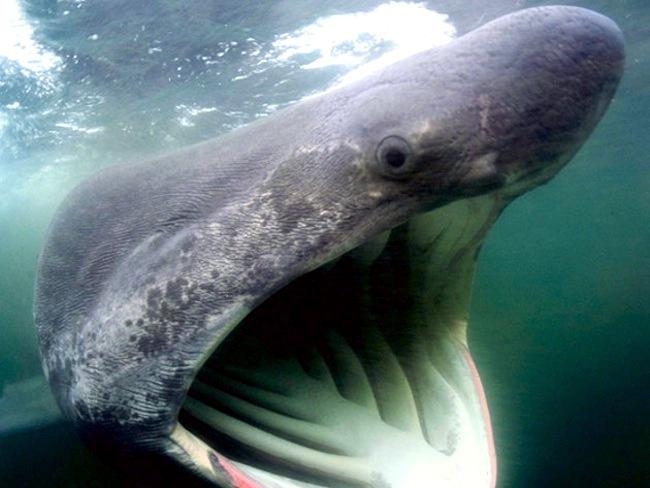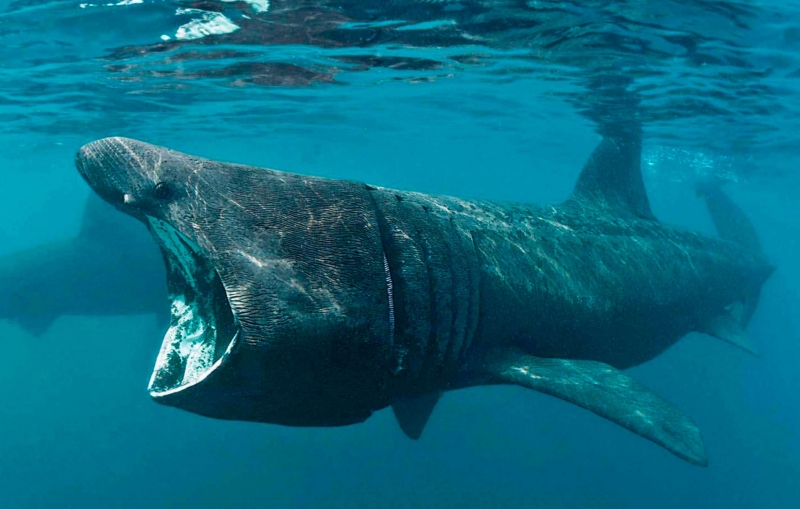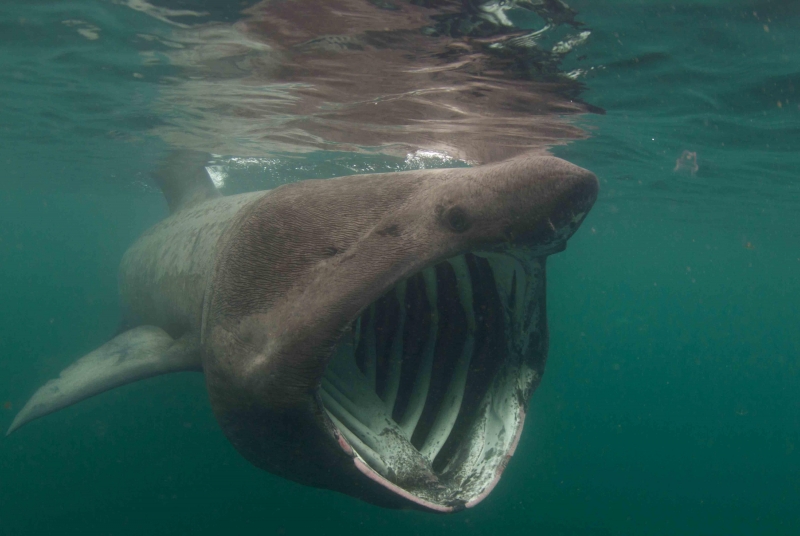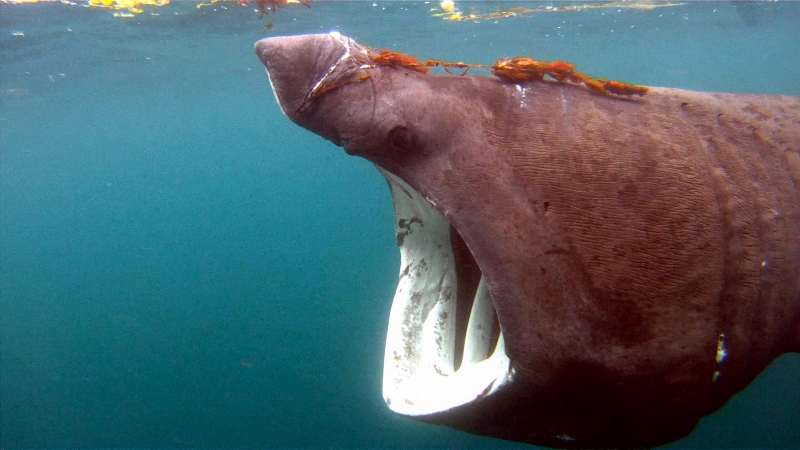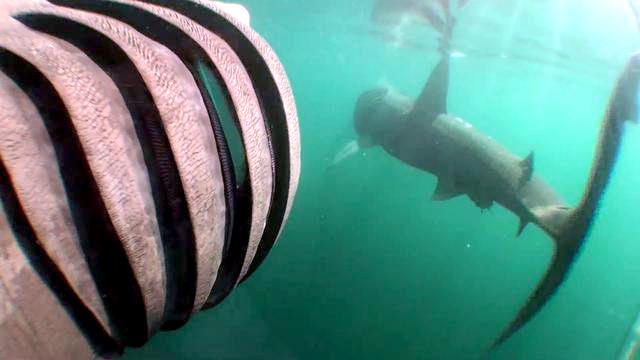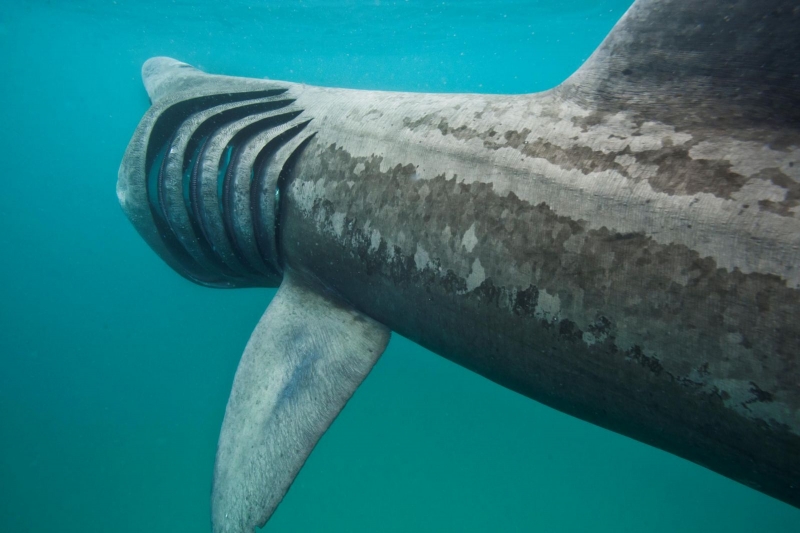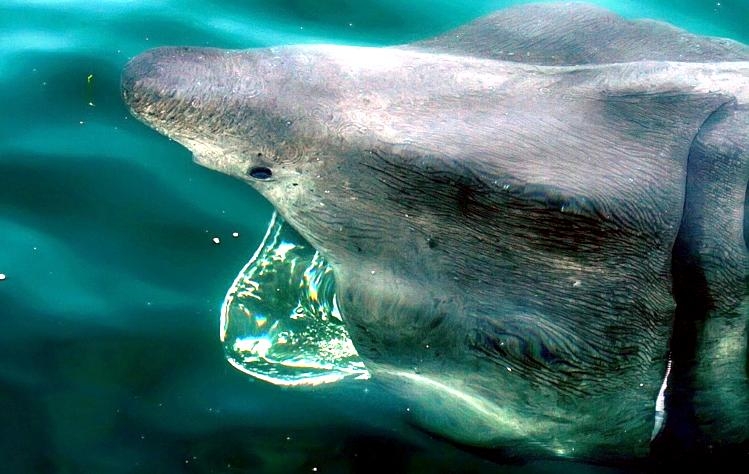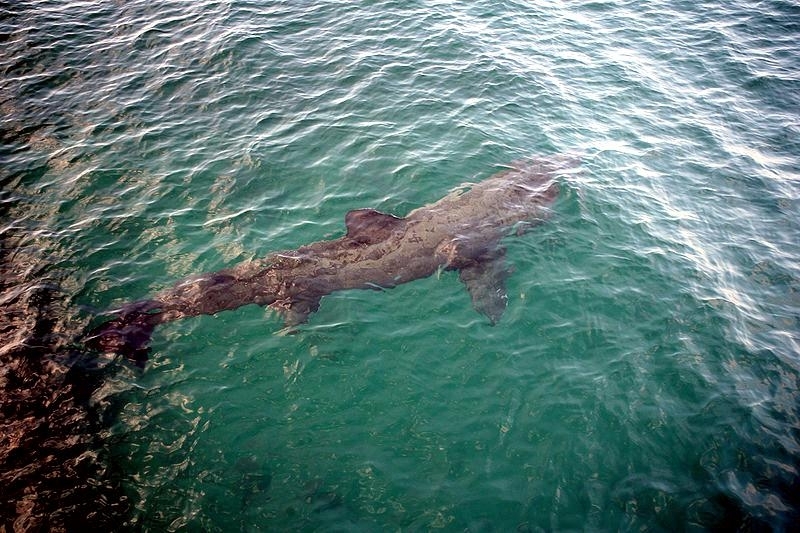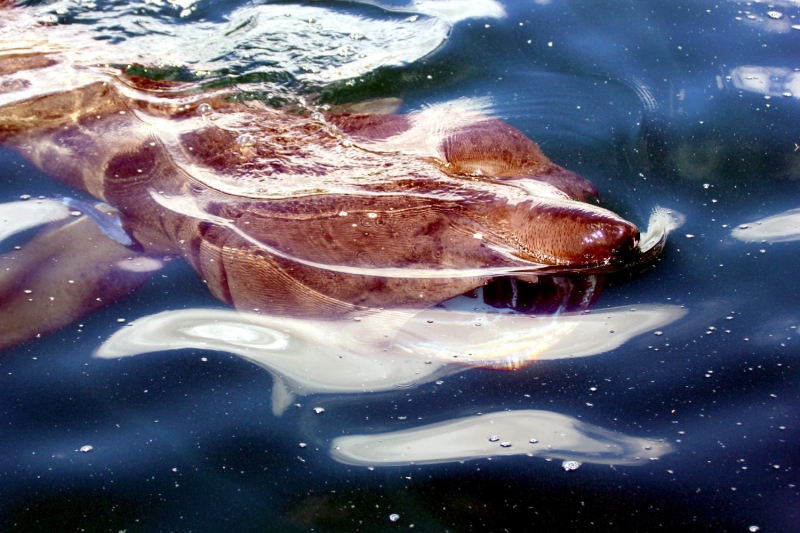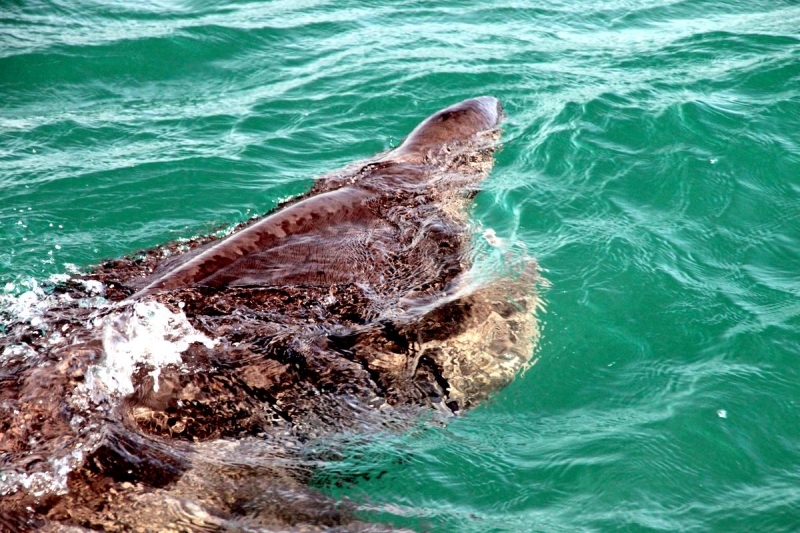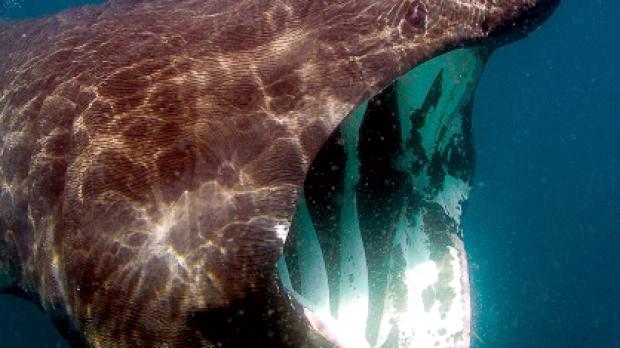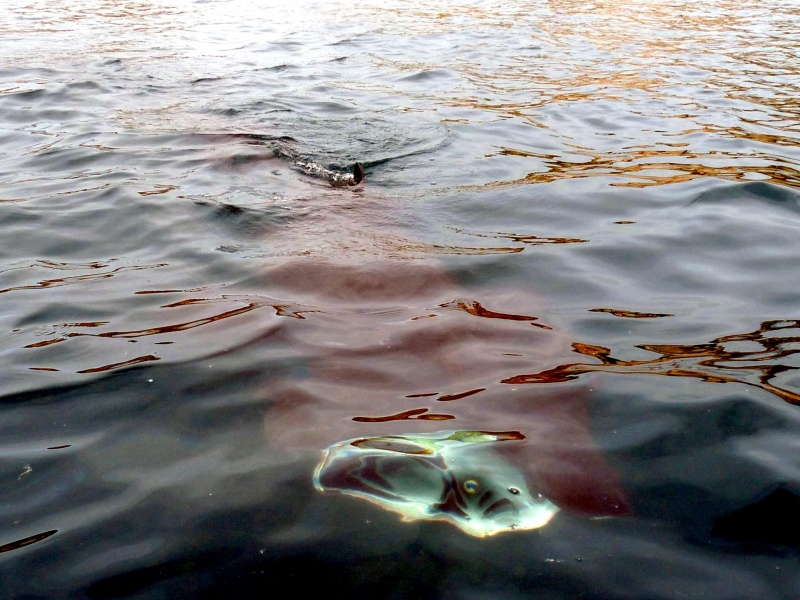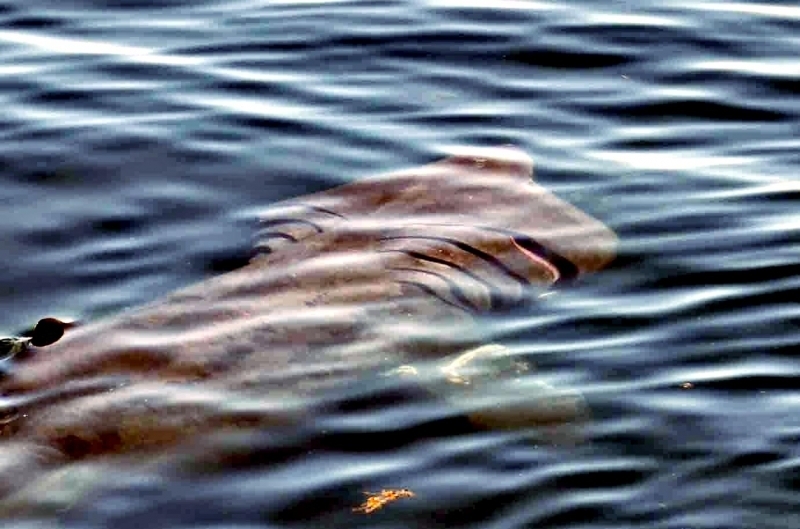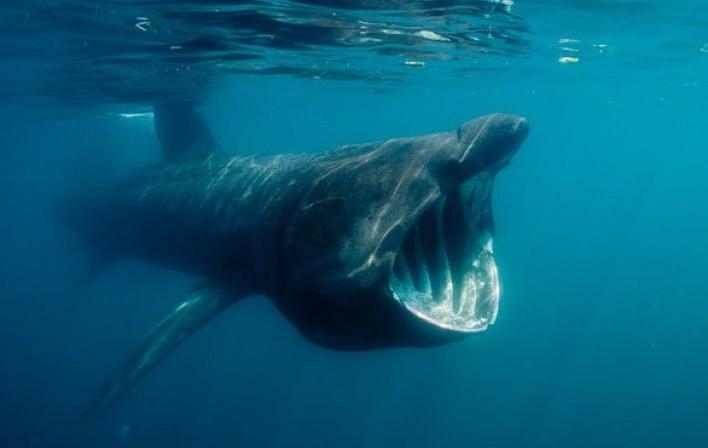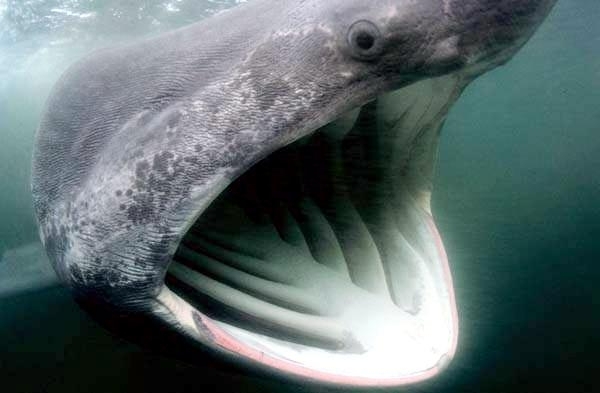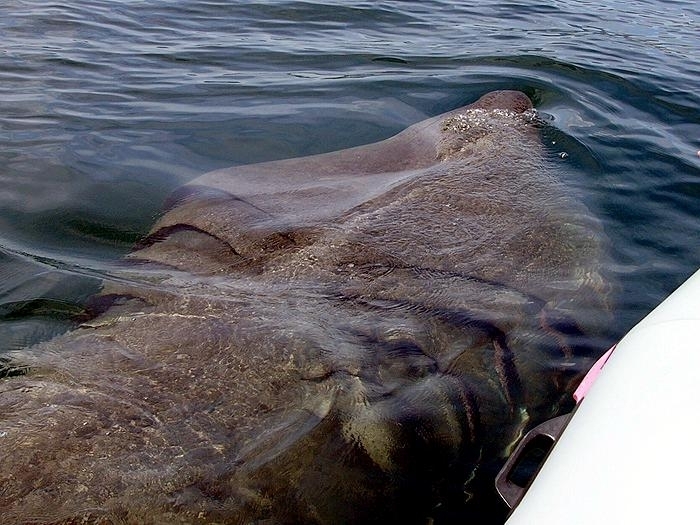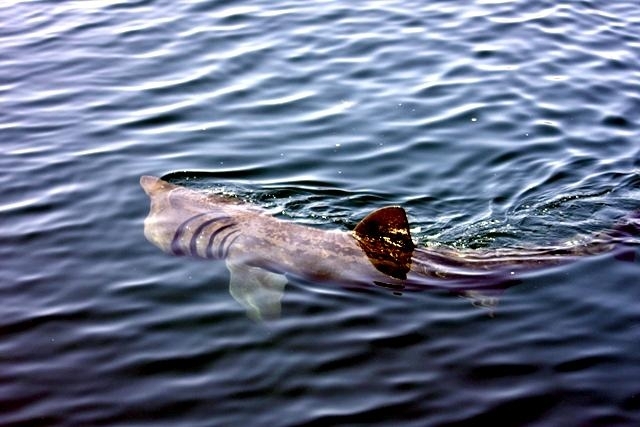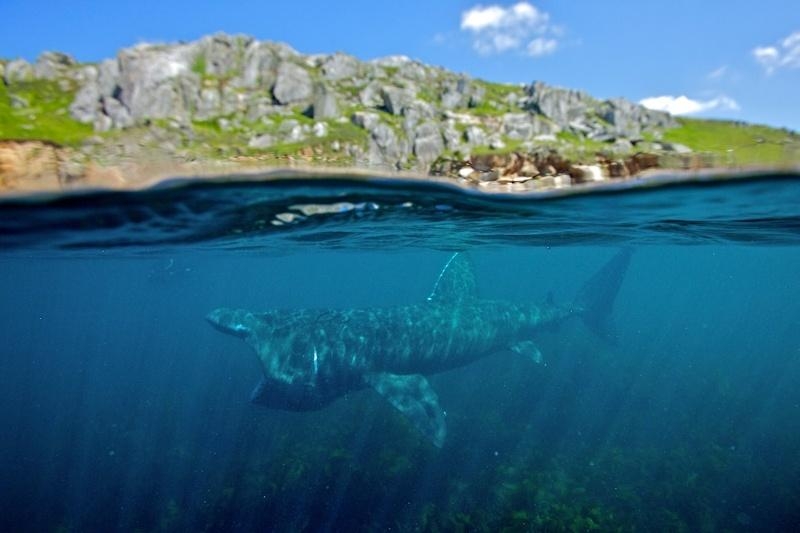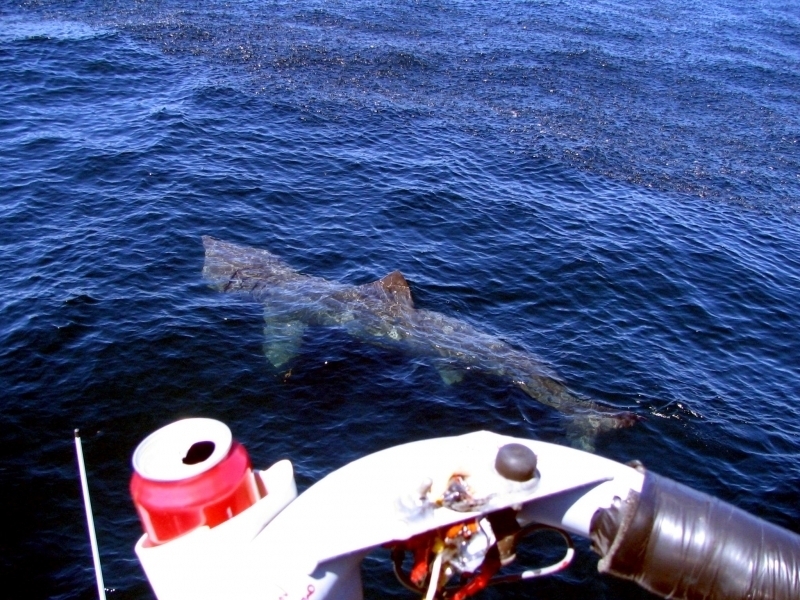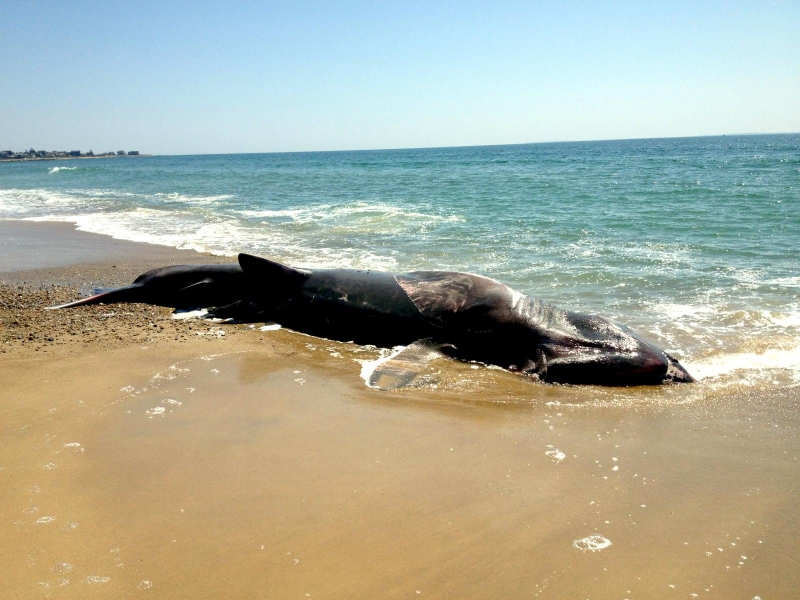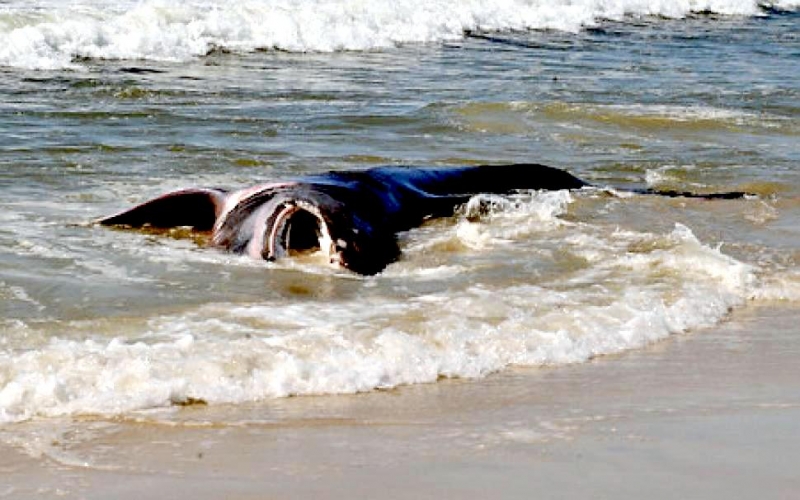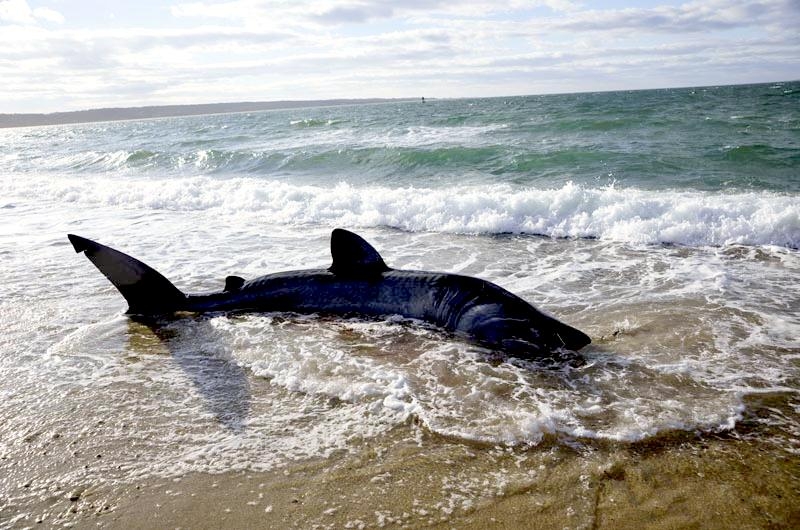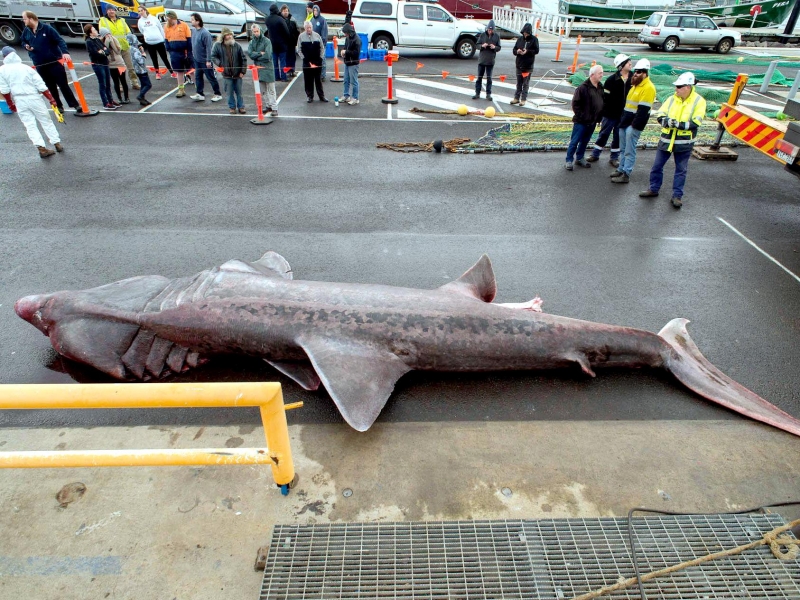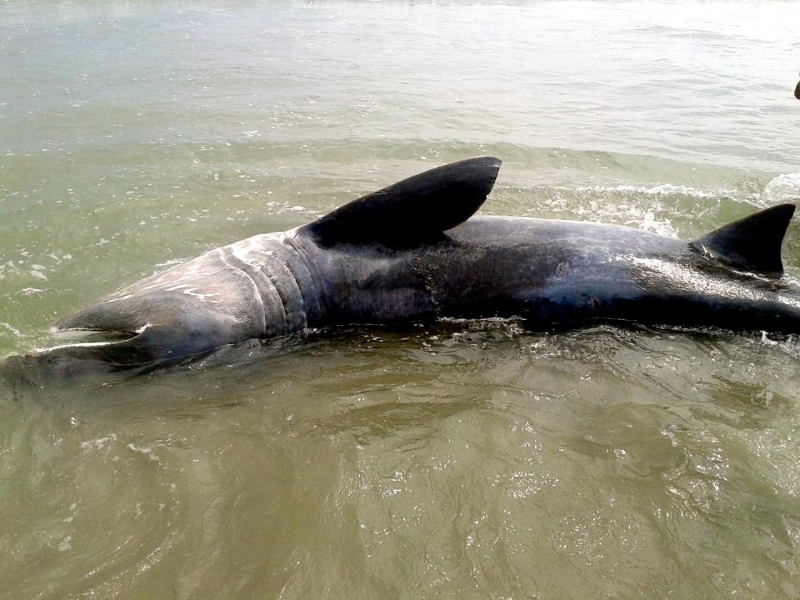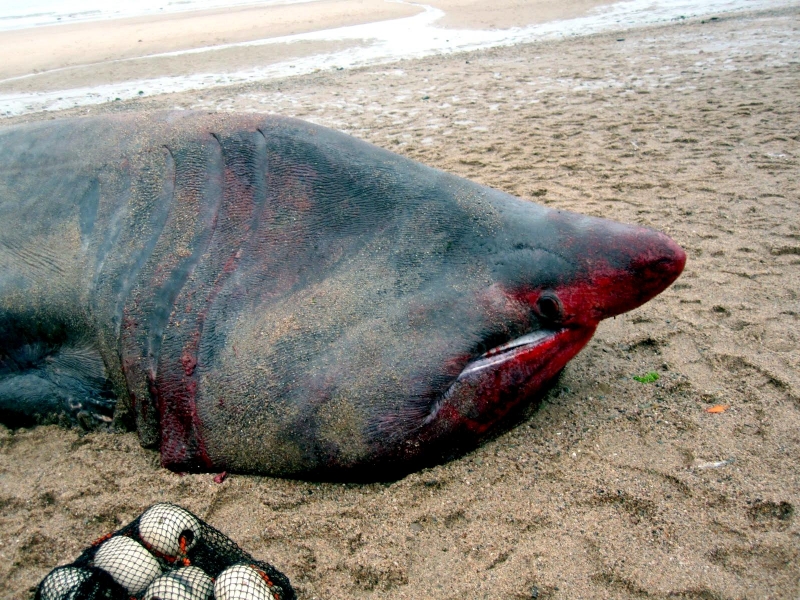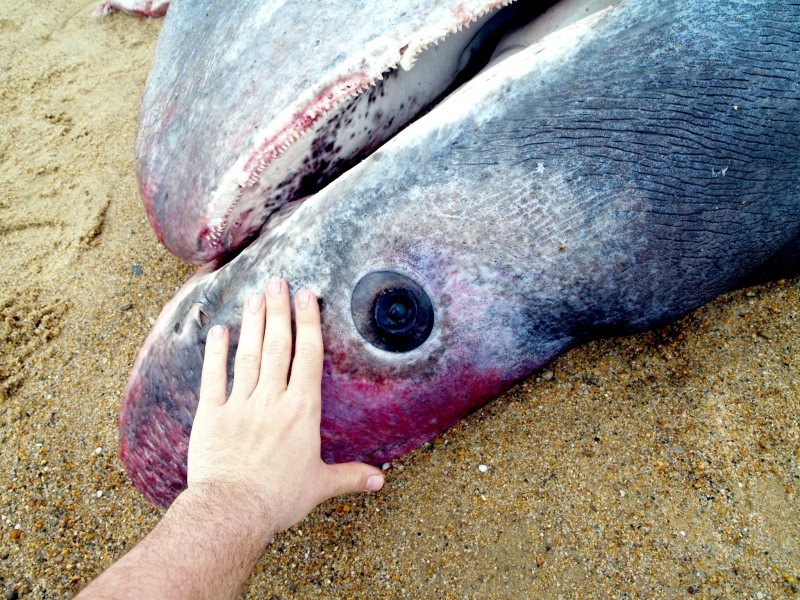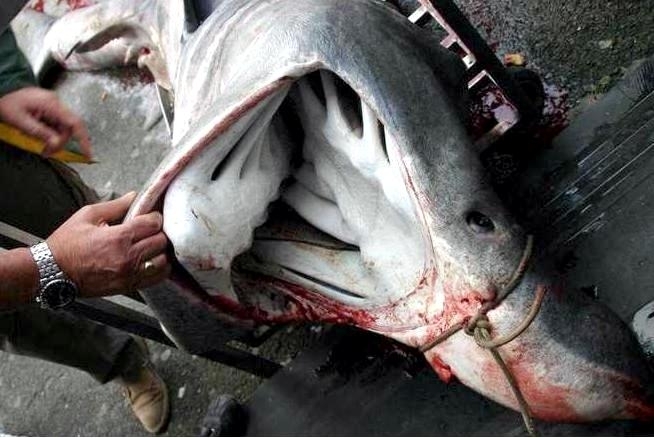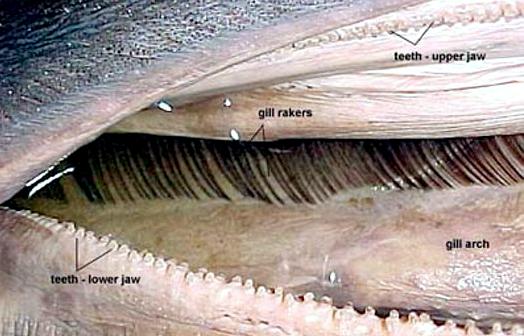“Cetorhinus maximus”
Basking Sharks are recognized by their huge sizes, conical snouts, sub-terminal mouths, extremely large gill slits, dark bristle-like gill rakers inside the gills, strong caudal keels and large lunate (curved) tails. Basking Sharks have numerous, small teeth. Their bodies are mottled gray-brown to slate-gray or black in color, sometimes with lighter patches on the dorsal side. The ventral side is paler, often with white patches under the snout & mouth or along the ventral side. It is the second largest fish/shark, only surpassed by the Whale Shark. As the 2nd largest shark species in the world, the Basking Shark has few natural predators. Apart from hunting by humans, Great White Sharks and Killer Whales are their only real threat, mainly due to the fact that Basking Sharks are slow & generally sluggish swimmers. Their average size is 6.7-8.8 meters with the largest measured Basking Shark at 9.75 meters and a 9.14 meters long individual was recorded that weighed 3,900 kilograms. There are also unconfirmed reports of Basking Sharks up to 13.7 meters long.
Basking Sharks are generally found in temperate waters of both the Pacific and Atlantic Oceans. They are usually observed by humans at or near the surface and have been sighted along almost every coastline bordering both the Atlantic & Pacific Oceans. The Basking Shark gets its name due to being slow moving and enjoying time basking in the sun. Along the west coast of North America, they have been sighted from British Columbia to Baja California usually in the winter & spring months. This trend is reversed in North Atlantic areas. Basking Sharks can open their cavernous mouths up to 1.2 meters wide. This allows water to pass over their gill rakers which strain small fishes, eggs and invertebrates out of the water. They are often seen feeding near the surface. They give birth to live young; the smallest juvenile recorded measured about 1.65 meters in length. Females are believed to reach sexual maturity when they reach 4-4.9 meters in length. Basking Sharks have been observed breeding in the North Atlantic in May. The location of pupping and nursery grounds is unknown.
